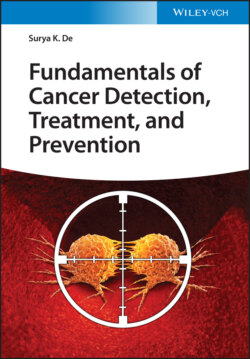Читать книгу Fundamentals of Cancer Detection, Treatment, and Prevention - Surya K. De - Страница 73
2.11 Role of Sunlight and UV Radiation on Cancer
ОглавлениеThe sun, sunlamps, and tanning booths all produce UV radiation. Too much exposure to UV radiation damages the skin, resulting in early signs of aging and an increased risk of skin cancer (Figure 2.10). Although these effects are more common among people with light skin tone, individuals with any color skin can develop skin cancer [77,78].
Figure 2.10 Role of sunlight on cancer.
Source: muhor/Adobe Stock.
People of all ages and skin tones are recommended to limit the amount of time they spend in the sun, especially between 10:00 am and 4:00 pm, when the sun's rays are the most intense. Keep in mind that UV radiation is reflected by sand, water, snow, and ice, and it can penetrate windshield and window glass. For anyone planning to be outside for over 15 minutes, it is advisable to apply sunscreen generously and repeatedly, stay in the shade as much as possible, and wear protective clothing. Tightly woven, loose‐fitting clothes that cover most areas of exposed skin work best. Choose bright or dark colors as these reflect more UV radiation than pastels or bleached fabrics.
Other sources of UV radiation, such as tanning beds, should also be avoided (Figure 2.11). According to the Skin Cancer Foundation, people who use a tanning bed before age 35 increase their chance of developing melanoma (skin cancer) by 75%.
Figure 2.11 Role of tanning beds on cancer.
Source: gstockstudio/Adobe Stock
.
